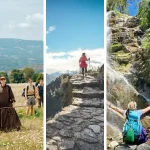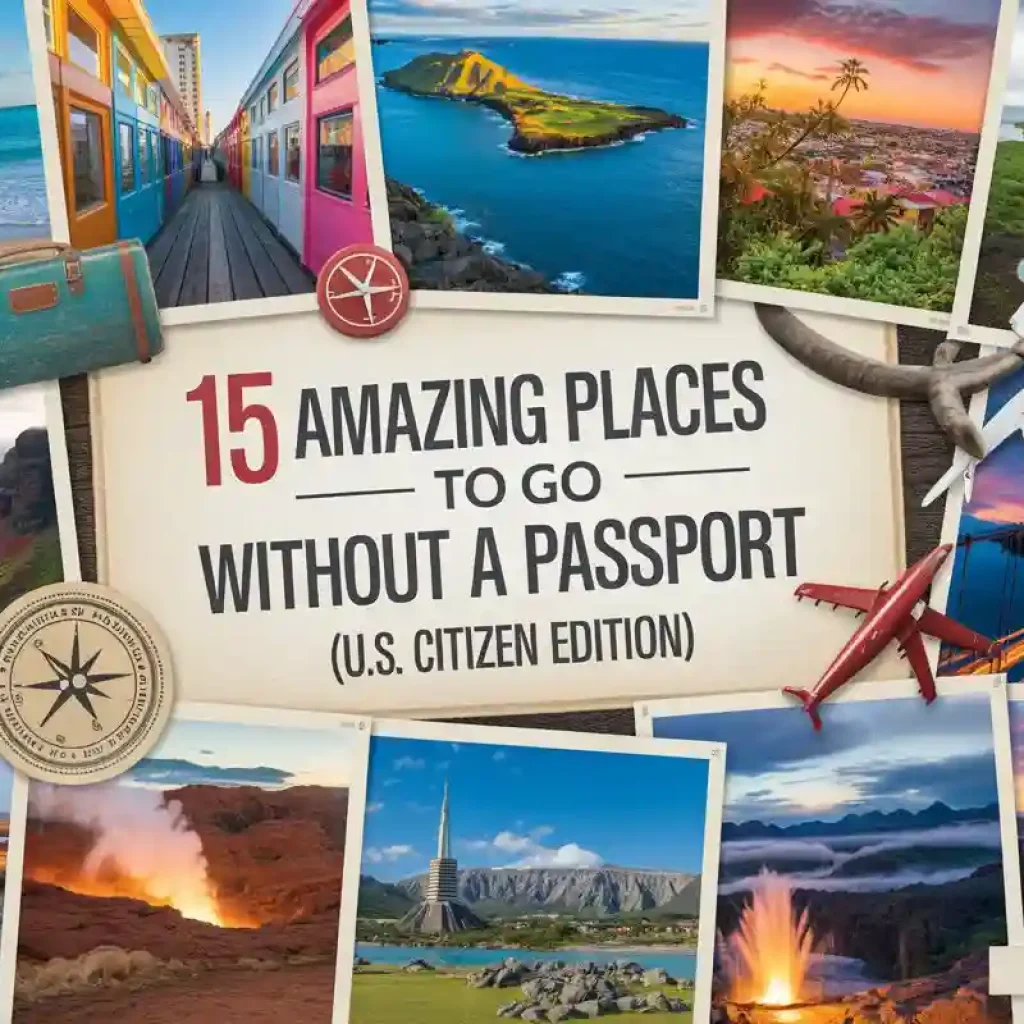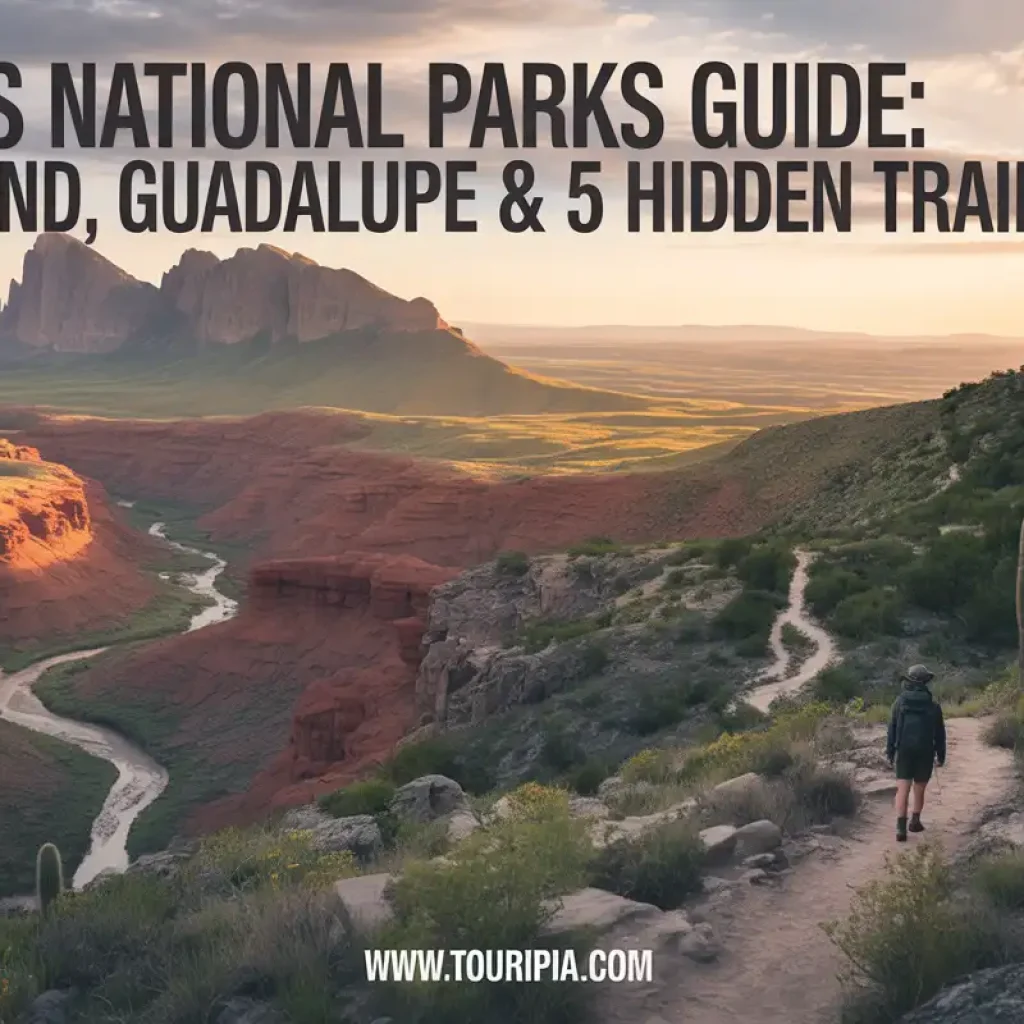Why Is Daytona Beach So Dangerous? An Honest Look in 2025
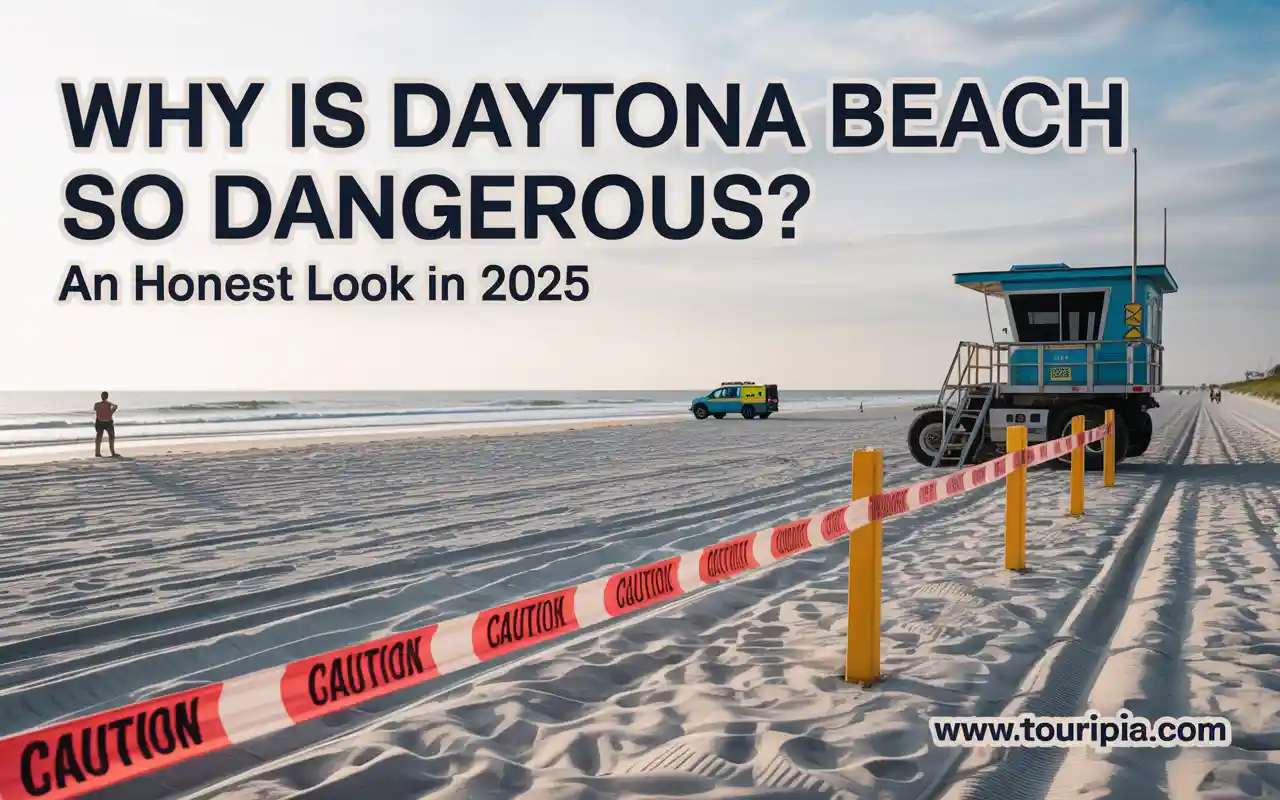
On my first trip to Daytona Beach back in 2010, I remember wondering why is Daytona Beach so dangerous when, at first glance, it looked like two worlds stitched together — golden sand stretching for miles, and an undercurrent of unpredictability that wasn’t always in the tourist brochures.
Fast-forward to 2025, and that feeling has only deepened. The numbers tell part of the story: Volusia County, where Daytona Beach sits, has consistently ranked high in Florida for beach-related rescues, rip current incidents, and even shark activity. Add in a crime rate above the national average, and you start to see why headlines often ask, why is Daytona Beach so dangerous in the first place.
But here’s the nuance — it’s also a destination millions love. It’s home to the legendary Daytona International Speedway, a mecca for surfers tackling Atlantic Ocean swells, and a Spring Break hotspot that rivals Miami Beach for sheer energy. The problem is, its thrills come with risks… some natural, some human-made.
After speaking with lifeguards along the surf zone, chatting with long-time locals in Ormond Beach coffee shops, and reviewing the latest 2025 NOAA and FBI crime data, I’ve pieced together a more complete picture.
This isn’t about fearmongering. It’s about giving travelers the full context — the beauty and the hazards — so you can decide for yourself why is Daytona Beach so dangerous to some, and more importantly, how to experience it safely.
1. Daytona Beach in Context
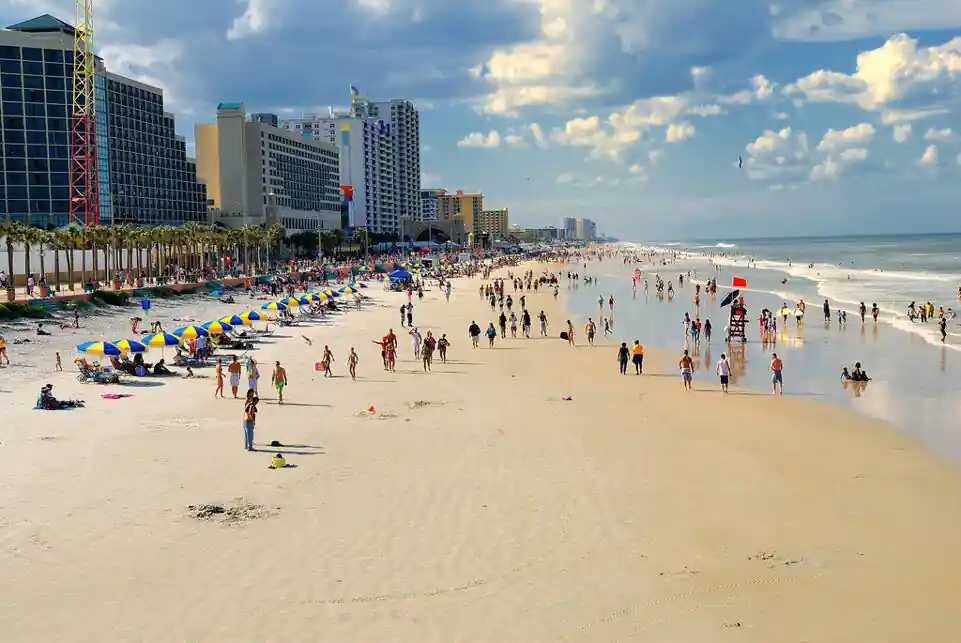
Perched on Florida’s Atlantic Coast, about an hour northeast of Orlando, Daytona Beach is part of the state’s famed Seacoast Region. The city thrives on tourism, and not just in the summer — events like Bike Week, the Daytona 500, and countless beach festivals keep hotels, restaurants, and boardwalk attractions buzzing year-round.
The beach itself is unusual in the United States: 23 miles of firm, wide sand that’s not only perfect for walking and sunbathing, but also one of the few places in the country where driving is still allowed directly on the shoreline. This mix of tradition and adrenaline is part of Daytona’s identity.
Culturally, the city blends old Florida charm with a gritty, party-friendly edge. Locals work in tourism, fishing, and education (with nearby institutions like Embry-Riddle Aeronautical University), while visitors range from motorsport fanatics to families on an Atlantic Coast road trip.
The economy depends on these waves of tourists, which means the city is always walking a fine line between welcoming the world and managing the safety issues that inevitably come with heavy crowds, alcohol-fueled nightlife, and powerful natural forces.
2. The Reputation: How Daytona Beach Got Its “Dangerous” Label
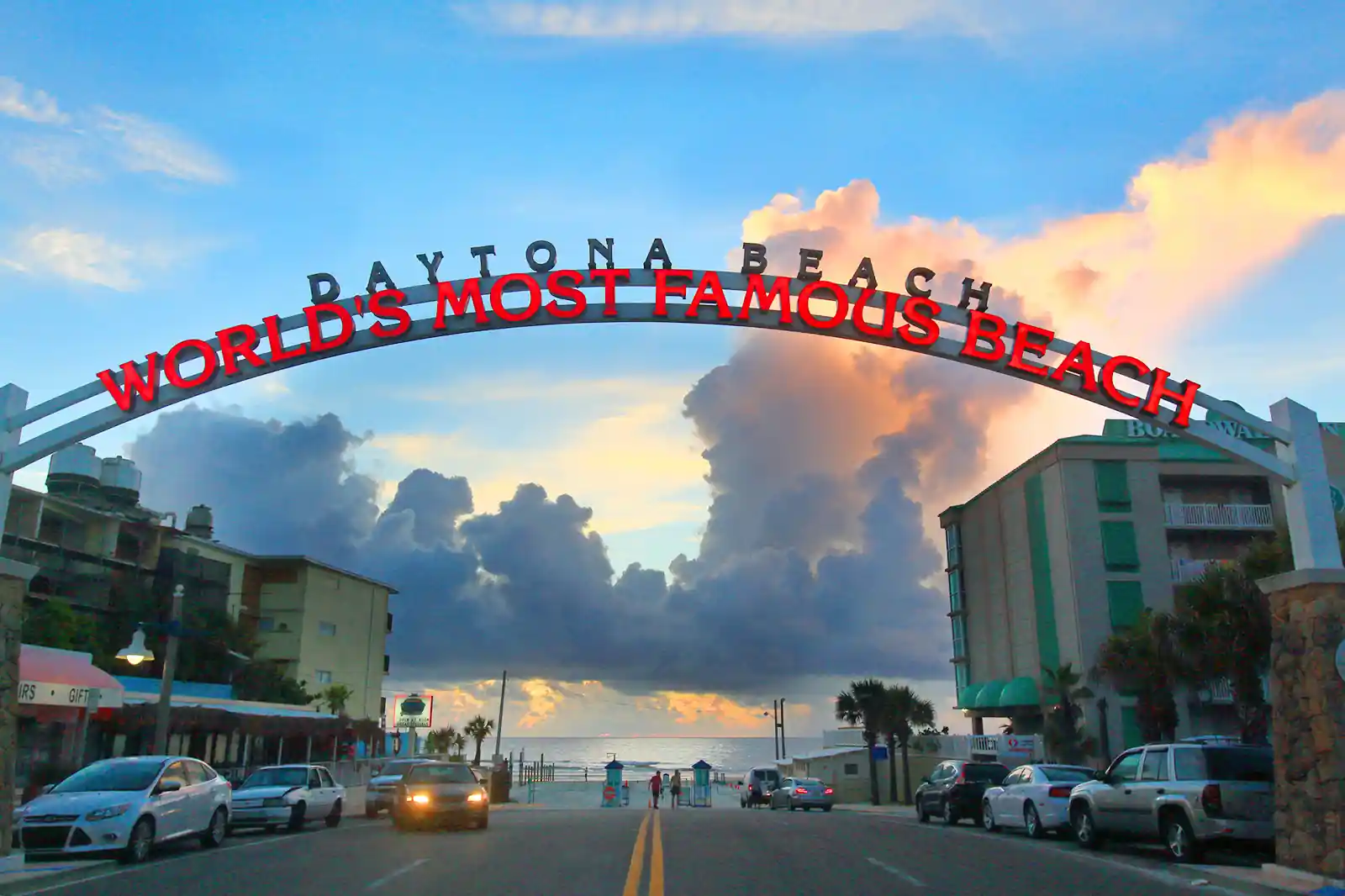
The “dangerous” reputation didn’t appear overnight. It’s the product of decades of incidents — some tragic, some overblown — and the way they’ve been amplified in the media. In the late 90s and early 2000s, national headlines focused on shark bites, earning Volusia County (and nearby New Smyrna Beach) the unofficial title of “shark bite capital of the world.”
More recently, viral videos on platforms like Reddit and TikTok have captured fights on the boardwalk, spring breakers ignoring rip current warnings, and even cars getting stuck in incoming tides.
Locals will tell you that much of this is exaggerated. Daytona Beach Shores and Ponce Inlet, for example, see far fewer crime reports and offer calmer stretches of sand. But crime statistics — including property thefts, aggravated assaults, and DUI arrests — do show spikes during peak tourist seasons, particularly around International Speedway Boulevard and nightlife-heavy districts.
The truth is, Daytona Beach is a study in contrasts. By day, it’s a family beach scene with kite flyers and paddleboarders.
By night, especially during Spring Break or Bike Week, the atmosphere can shift fast — a mix of rowdy energy, alcohol, and occasional bad decisions. Understanding both sides of its identity is key to enjoying it without becoming part of its cautionary tales.
3. The Main Safety Concerns in 2025
3.1 Strong Rip Currents and Rough Surf
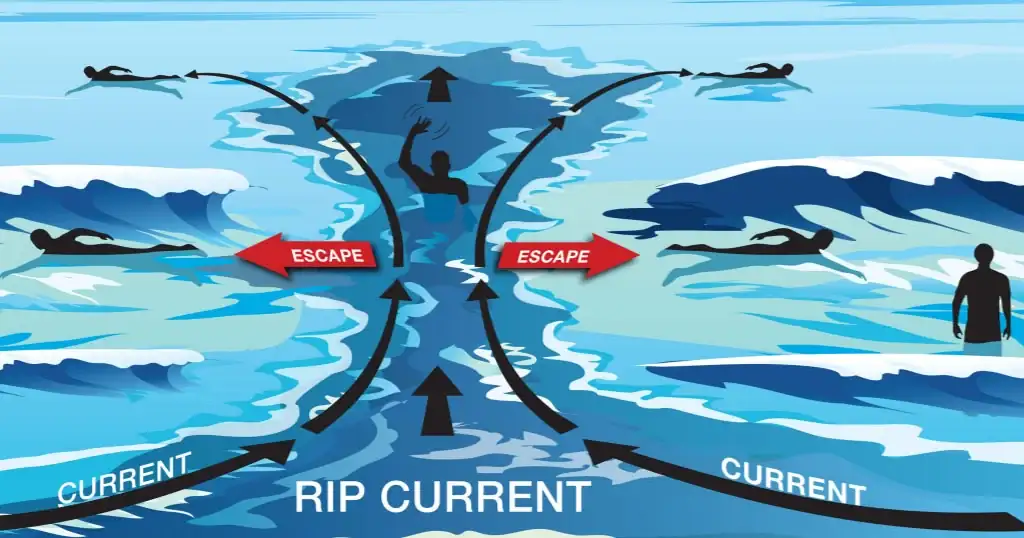
If you’ve never been caught in a rip current, it’s hard to grasp how fast things can go wrong. My closest call at Daytona Beach happened in late August 2018, right after a tropical storm brushed past Florida’s coasts.
I was waist-deep, not far from the Ponce Inlet Pier, when the Atlantic Ocean suddenly started pulling me out like an invisible hand. Luckily, years of travel and surf safety briefings had drilled the rule into my head — swim parallel to shore until you’re free.
Daytona’s geography makes rip currents almost inevitable. Shifting sandbars, strong tidal flows, and the beach’s open exposure to the Atlantic create perfect conditions for them year-round. NOAA’s 2025 surf zone forecast already lists Volusia County as one of the higher-risk areas in the United States for rip-related rescues.
Local lifeguards, some with decades on the job, will tell you that calm-looking water can be more deceptive than stormy surf.
If you’re wondering Why is Daytona Beach so dangerous today?, check the beach flags before stepping in. A red flag means high hazard — rip currents and large surf. Double red?
Water is closed to the public. Staying between lifeguard towers, wearing personal flotation devices for kids, and avoiding swimming alone are the simplest ways to keep your Atlantic adventure from turning into a rescue statistic.
3.2 Shark Sightings & Marine Hazards
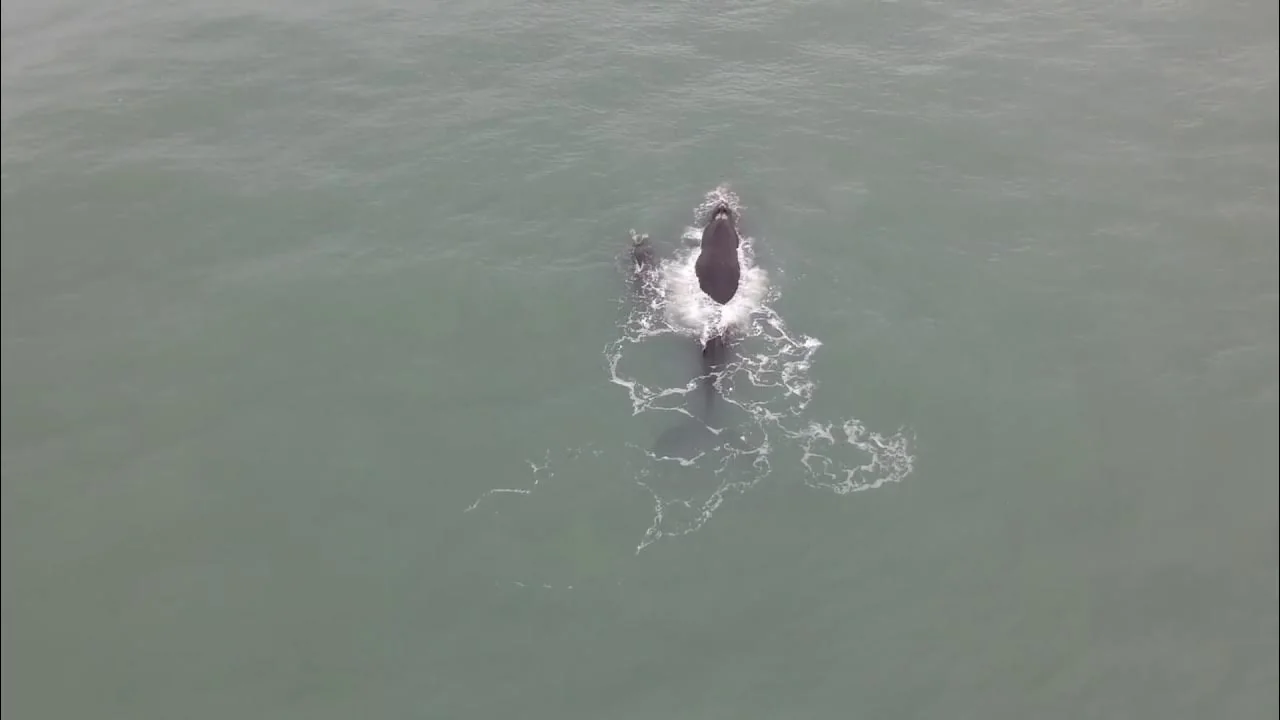
Daytona Beach shares the same stretch of coastline as New Smyrna Beach — a spot marine biologists sometimes call the “shark bite capital of the world.” The reasons are more about nature than malice: the Indian River Lagoon flushes nutrient-rich water into Ponce Inlet, attracting baitfish, which in turn attract shark species like blacktip, spinner, and the occasional bull shark.
In 2025, shark activity remains a talking point, especially on forums like Why is Daytona Beach so dangerous reddit. But here’s the reality: most shark bites here are minor, non-fatal, and involve surfers who resemble prey from below.
I’ve swum these waters dozens of times without incident, but I stick to daylight hours, avoid murky water, and steer clear of fishing piers where bait draws predators.
Beyond sharks, Daytona’s marine hazards can surprise you. Portuguese man o’ war, moon jellyfish, sea lice, and even storm runoff carrying fecal bacteria occasionally trigger health advisories. Check the Volusia County beach patrol site before heading out — it’s updated daily with water conditions, shark sightings, and any closures.
3.3 Dangerous Driving on the Beach
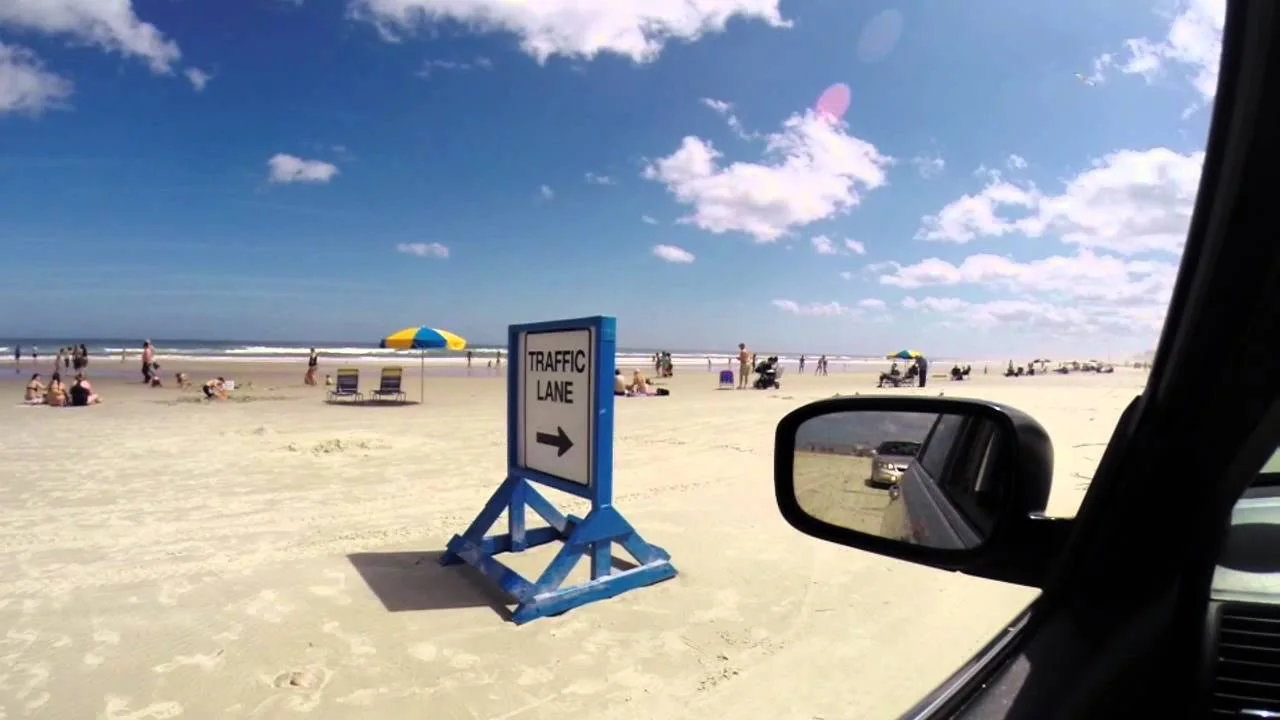
One of Daytona Beach’s quirks — and selling points — is that you can literally drive your car on the sand. I’ve seen everything from pickup trucks with surfboards to rental sedans creeping past sunbathers near Daytona Beach Shores. But that novelty comes with risk.
Every year, a handful of accidents make the news: pedestrians clipped by inattentive drivers, kids darting into the lane, and vehicles getting stuck in incoming tides. In 2025, the city has tightened regulations — speed limits dropped to 10 mph in high-density zones, and the beach patrol enforces them more aggressively. Still, the mix of cars, crowds, and soft sand can be a recipe for trouble, especially during busy weekends or Spring Break.
If you plan to drive, stick to designated lanes, keep headlights on, and never assume pedestrians see you coming. And if you’re walking, remember that the surf zone isn’t the only moving hazard — a quiet beach morning can quickly turn into a miniature traffic jam when the tide’s right.
3.4 Crime and Theft
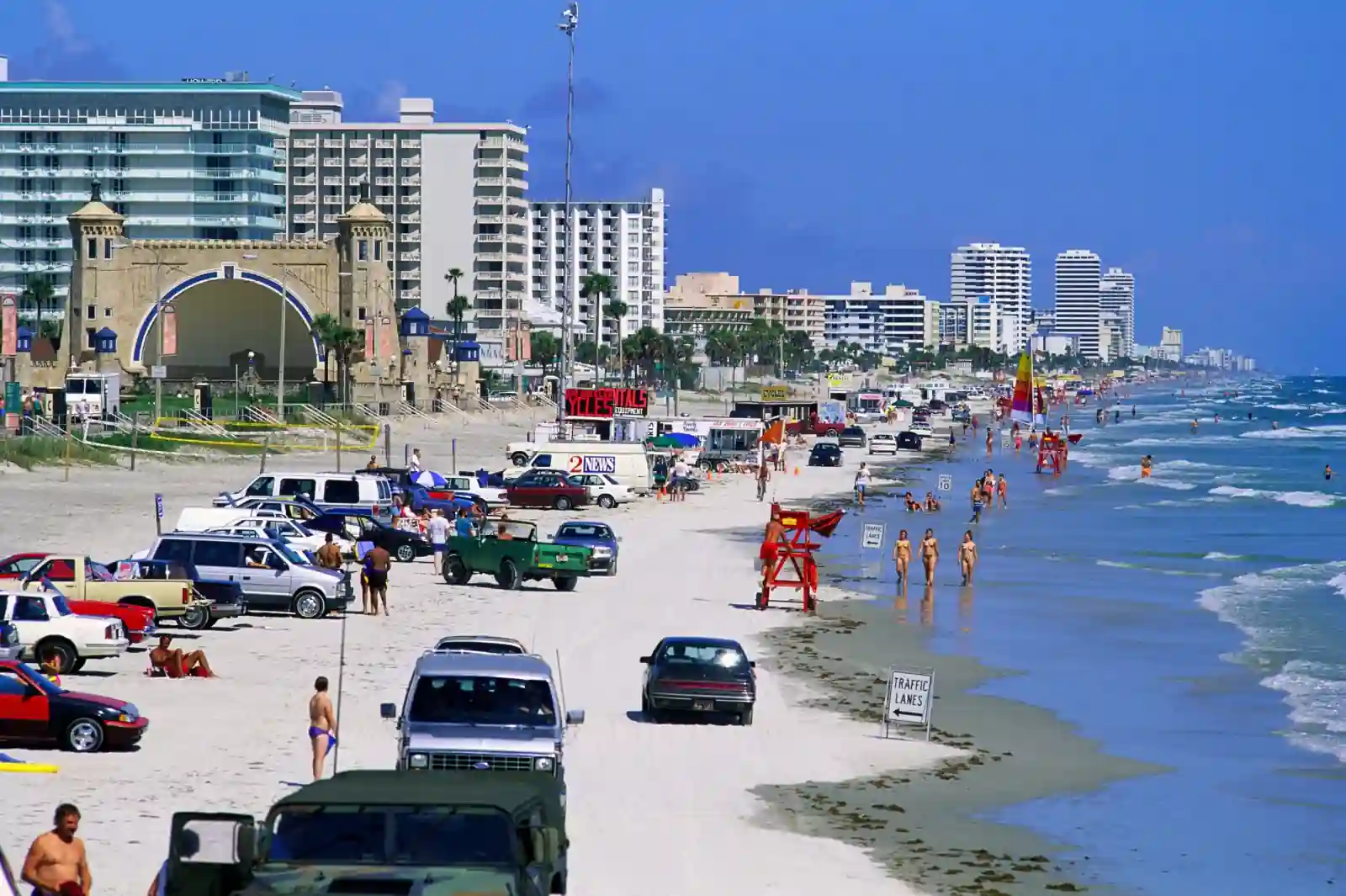
When people ask me Is Daytona Beach ghetto to live or Is Daytona Beach ghetto at night, I always explain that the city is more complex than a quick label. Crime here is concentrated in certain neighborhoods and times, but it’s not a blanket reality for the whole area.
According to 2025 FBI crime data, Daytona Beach’s property crime rate remains higher than the Florida average, especially in zones near International Speedway Boulevard, Holly Hill, and parts of Riverview. Petty theft, larceny, and vehicle break-ins tend to spike during major events like Bike Week or the Daytona 500.
Tourist-heavy spots like the boardwalk can also be pickpocketing hotspots — I learned this the hard way during a Spring Break visit in 2016 when a friend’s phone vanished in the crowd. Violent crime exists, but it’s less likely to affect casual visitors sticking to well-lit, busy areas.
The Daytona Beach Police Chief, Jakari Young, has said that increased patrols and the Violent Criminal Apprehension Team are making inroads, but opportunistic crime remains a concern.
For families wondering Why is Daytona Beach so dangerous for families, the answer often comes down to situational awareness. Avoid isolated beach access points at night, don’t leave valuables in sight in your car, and book accommodations in safer zones like Ormond Beach, Port Orange, or Daytona Beach Shores.
3.5 Alcohol & Party Culture Risks
Daytona’s party culture is both a draw and a danger. During Spring Break, the sand between the pier and Main Street can feel more like a festival ground than a family beach.
Loud music, open containers, and a mix of college students and bikers mean the atmosphere changes dramatically after dark. For some, it’s exactly what they came for. For others — especially families — it’s when they start asking Why is Daytona Beach so dangerous at night.
Alcohol is often a factor in beach rescues, fights, and DUI arrests. I’ve walked past scenes where paramedics were tending to sunburned, dehydrated partiers who underestimated the Florida heat after a few drinks. In 2025, city officials have tried to curb excesses with stricter alcohol enforcement on the sand, but bars along Atlantic Avenue and the boardwalk still pour until late.
If you want to enjoy Daytona’s nightlife, pace yourself, stay hydrated, and use rideshares instead of driving. And if you’re here with kids, plan your beach time for mornings and early afternoons, when the energy is more about sandcastles than shot glasses.
4. Seasonal and Weather-Related Dangers
4.1 Hurricane Season Impact
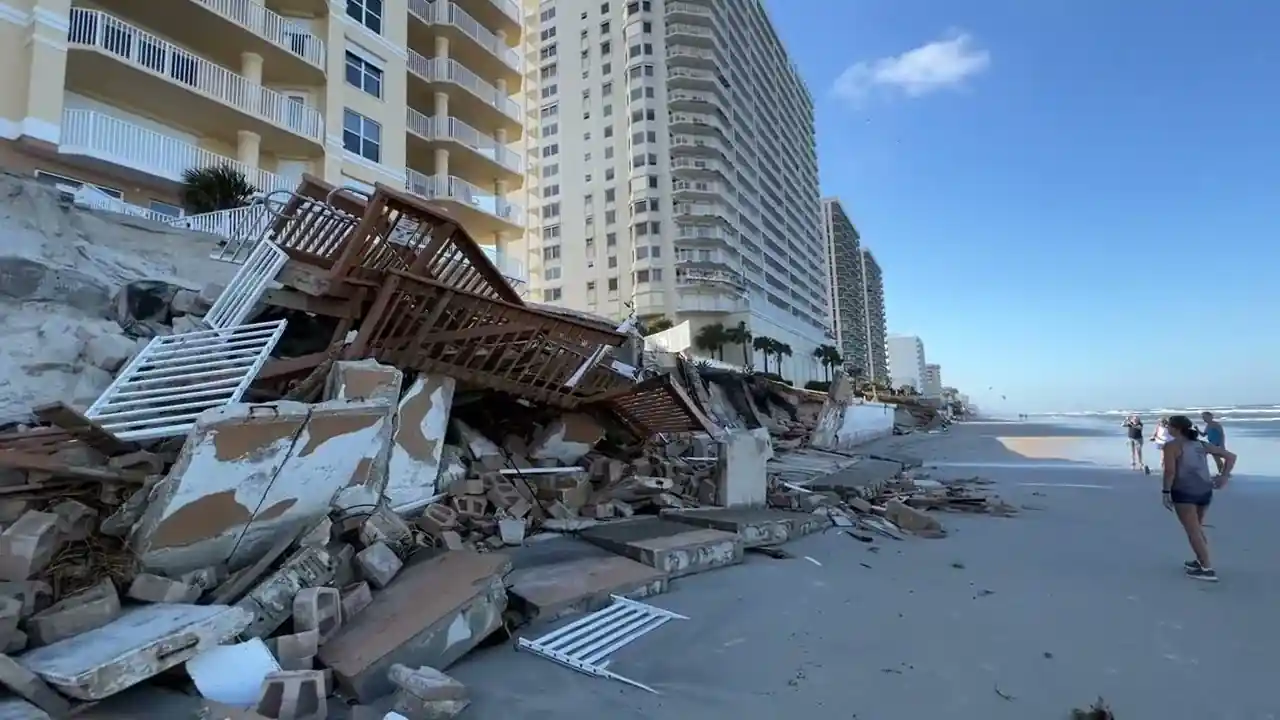
If you’ve spent any time along Florida’s coasts, you know the weather can shift from postcard-perfect to evacuation-ready in less than a day.
Daytona Beach is no exception. Hurricane season here runs from June through November, and Volusia County has seen its share of direct hits and near misses. In 2022, I was in Ormond Beach when a late-season hurricane skirted the shore — the surf zone turned violent, roads flooded, and Ponce Inlet Pier took a pounding from waves.
NOAA’s 2025 forecast suggests an active Atlantic season, partly due to warmer sea surface temperatures. For travelers asking Why is Daytona Beach so dangerous today, sometimes the answer is literally brewing hundreds of miles offshore. Even without a direct strike, storm systems can produce rip currents, high surf, and dangerous debris along the shore.
If you’re visiting in hurricane season, keep an eye on the National Hurricane Center updates and have a flexible itinerary. Hotels here are used to hurricane protocols — many offer no-penalty cancellations when storm watches are issued — but being prepared to change plans is part of smart coastal travel.
4.2 Extreme Heat & Sunburn Risk
Florida’s heat isn’t just uncomfortable — it can be dangerous, especially in peak summer. Daytona Beach’s heat index regularly tops 100°F (37°C) in July and August, and the UV index can hit extreme levels. On my first summer visit, I underestimated the midday sun and paid for it with a blistering sunburn that made the rest of the trip a lesson in aloe vera applications.
Children, elderly visitors, and anyone with medical conditions need to take extra care. Use high-SPF sunscreen, reapply often, and don’t rely solely on umbrellas — UV rays bounce off sand and water. If you’re prone to dehydration, carry electrolyte packets. And remember, the Atlantic breeze might make you feel cooler, but it’s no match for Florida’s sun at full force.
5. Insights From Locals & Experts
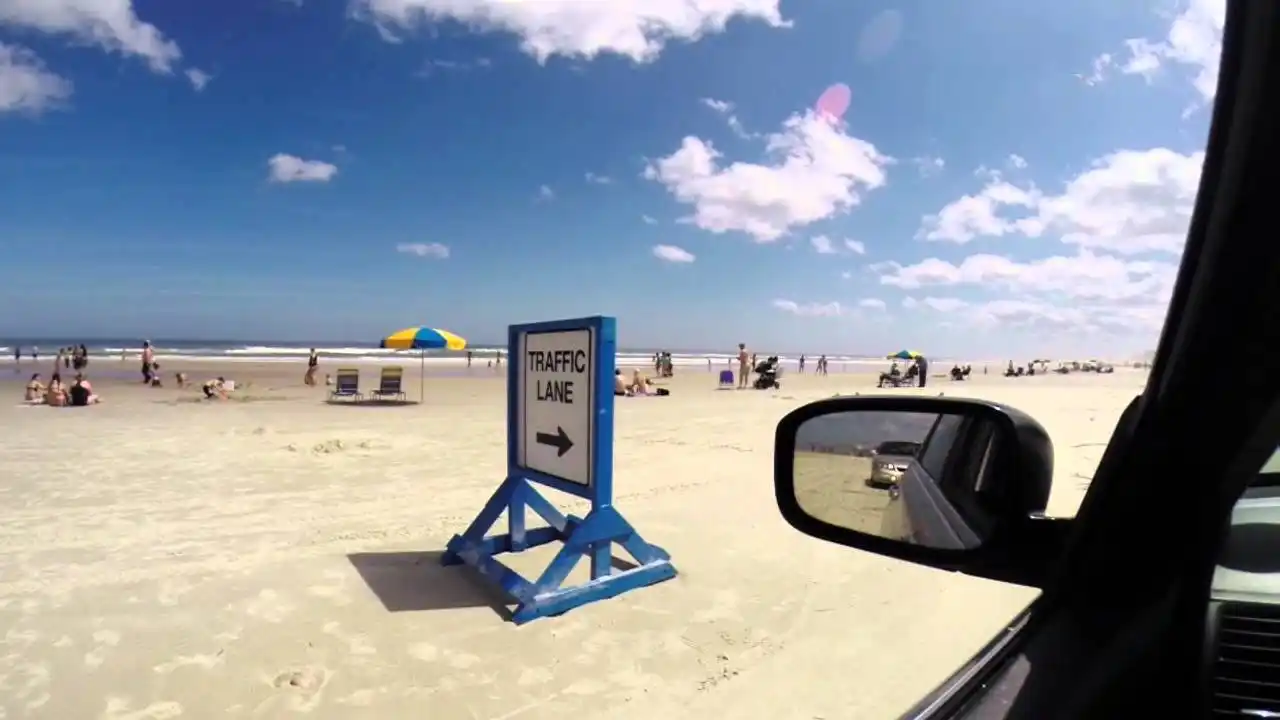
Whenever I’m researching a place with a “dangerous” reputation, I make a point to talk to people who live and work there year-round. Daytona Beach was no different.
One afternoon near the Lifeguard Headquarters on Atlantic Avenue, I met a senior beach patrol officer who’s been on the job for 18 years. He told me flat out — the biggest dangers aren’t sharks or even hurricanes, but “people underestimating the ocean and overestimating their own swimming skills.” His advice for anyone asking Is Daytona Beach safe to swim? Stick to supervised areas, check the beach flags, and never swim near fishing piers where baitfish attract predators like blacktip and bull sharks.
I also spoke with a hotel manager in Daytona Beach Shores who’s raised three kids here. Her perspective on Is Daytona Beach safe for families was reassuring: “It’s about knowing where to go. We send guests to calmer areas south of Ponce Inlet, avoid the boardwalk late at night, and encourage day trips to Ormond Beach if they want quieter sand.”
Even local marine biologists from the Indian River Lagoon research team emphasize context. Yes, Volusia County records more shark bites than anywhere else in the United States, but they stress that most are minor and preventable with basic precautions.
City officials, including Daytona Beach Police Chief Jakari Young, have doubled down on patrols during major events and partnered with the Coast Guard for water safety campaigns. The message from all sides is the same: the hazards are real, but manageable if you respect both the ocean and the environment around it.
6. How to Stay Safe at Daytona Beach
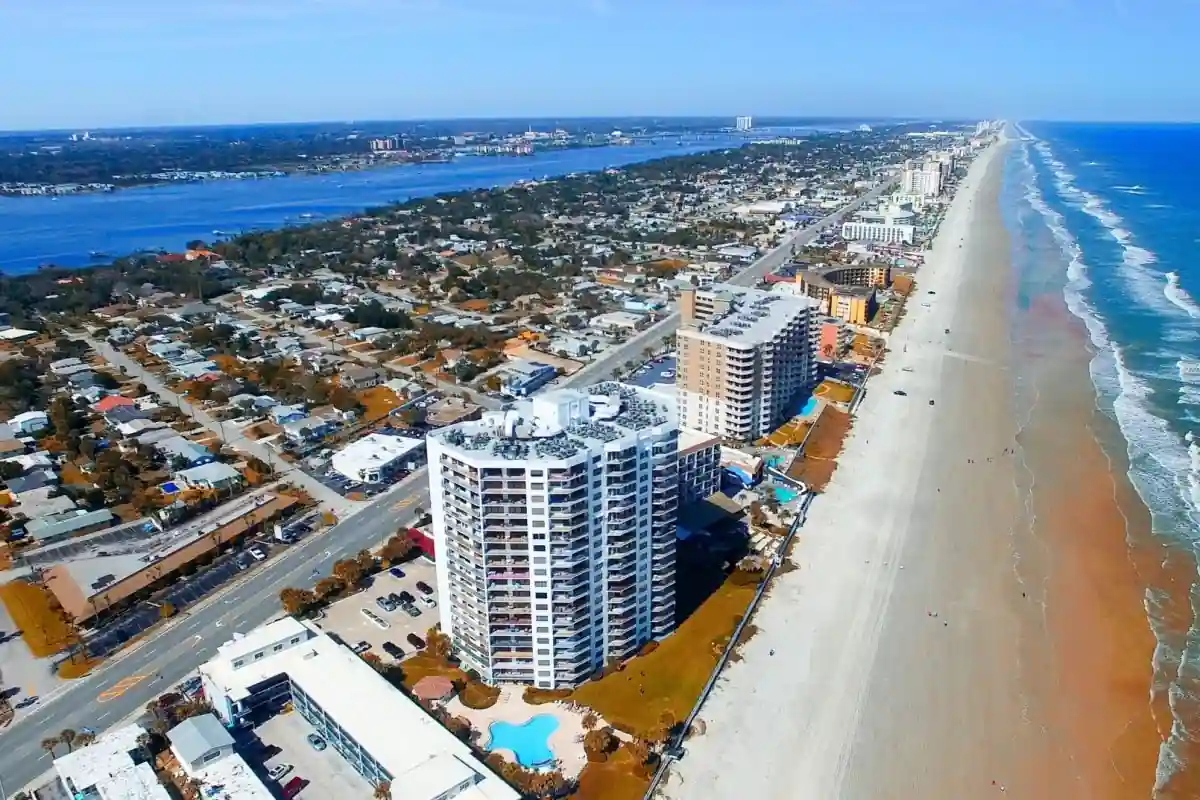
After more than a dozen visits over the years, I’ve learned that enjoying Daytona Beach safely isn’t about avoiding it altogether — it’s about knowing the rules of the game. Whether you’re a first-timer asking Why is Daytona Beach so dangerous or a repeat visitor chasing that Atlantic Coast sunrise, a little preparation goes a long way.
1. Understand the beach flag system.
Daytona’s lifeguards use a clear visual code:
- Green – low hazard
- Yellow – medium hazard (use caution)
- Red – high hazard (strong surf and rip currents)
- Double Red – water closed to the public
- Purple – dangerous marine life present (jellyfish, Portuguese man o’ war, etc.)
If you’re wondering Is Daytona Beach safe to swim, the answer depends heavily on those flags. Always swim between lifeguard towers, and keep kids within arm’s reach — no exceptions.
2. Choose the right area for your travel style.
For a quieter, family-friendly vibe, head to Daytona Beach Shores, Ormond Beach, or Ponce Inlet. If nightlife is your thing, the Main Street Pier area will deliver, but it’s best for groups of adults rather than young families.
3. Avoid high-risk times and spots.
Late-night boardwalk strolls can be fine in groups, but solo travelers — especially those unfamiliar with the city — should avoid isolated areas. If you’re asking Is Daytona Beach ghetto at night, understand that certain neighborhoods, particularly west of International Speedway Boulevard, see higher crime rates after dark.
4. Protect your belongings.
Lock valuables out of sight or leave them at your hotel. During events like Bike Week or the Daytona 500, property crime and larceny thefts historically spike.
5. Respect the ocean’s power.
The Atlantic Ocean here has a mind of its own. Don’t swim near piers or fishing lines, avoid murky water after storms (storm runoff can carry bacteria), and wear personal flotation devices for weaker swimmers.
6. Have emergency numbers handy.
Beach Patrol: (386) 239-6414
Non-emergency police: (386) 248-1777
Coast Guard Station Ponce Inlet: (386) 428-4110
Daytona Beach can be both thrilling and safe — but only if you blend adventure with awareness. Treat the beach like a local does: respect the surf, watch your surroundings, and leave the sand with as many stories as you came with, just minus the emergency room visit.
7. Alternatives for More Cautious Travelers
If you like the idea of a Florida beach trip but feel a little uneasy about Daytona Beach’s higher waves, bustling crowds, or lively nightlife, you’re not out of options.
Nearby spots like New Smyrna Beach, just a short drive south, offer a slower pace with gentler surf, making it popular with families who prefer a more laid-back atmosphere. Ormond Beach, to the north, has a quieter shoreline and a more residential vibe—perfect for those who want the sand without the chaos.
Some travelers choose these alternatives for peace of mind, especially if they’re traveling with young kids, elderly family members, or anyone who isn’t a strong swimmer.
While you might not get the same iconic boardwalk energy as Daytona, you gain calmer waters, less traffic, and a more relaxed setting. It’s all about deciding whether you want your beach day filled with action… or a little more space to breathe.
8. Balanced Perspective: Is Daytona Beach Worth Visiting in 2025?
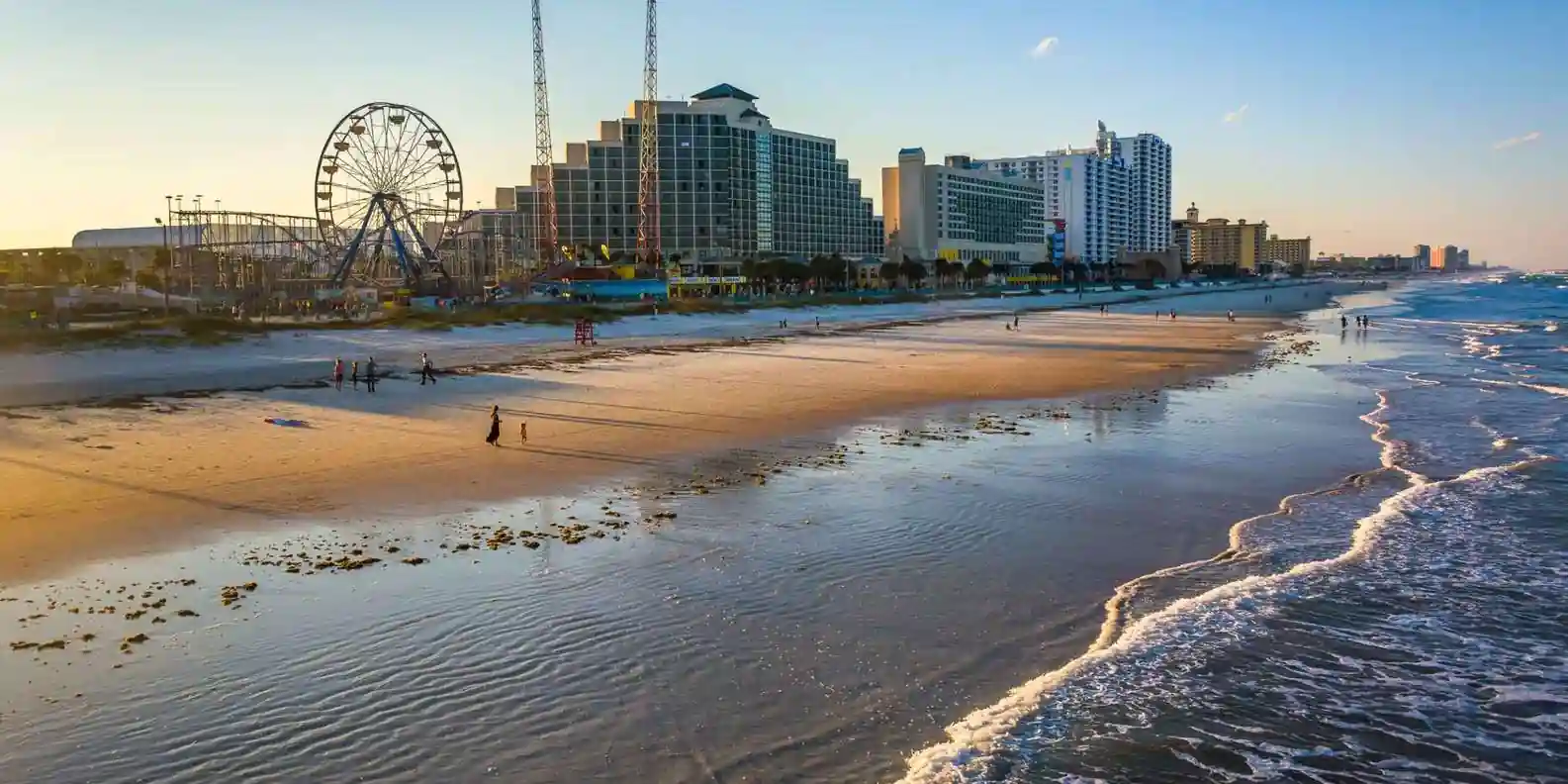
The truth is, Daytona Beach in 2025 is still very much worth visiting—it just depends on what you’re looking for. On the plus side, you have a 23-mile stretch of sand, warm Atlantic waters, vibrant events like Bike Week and the Daytona 500, and a nightlife scene that keeps the energy high. On the flip side, the beach can get crowded, the surf can be unpredictable, and certain areas may not suit travelers seeking quiet solitude.
If you’re an adventurous type, love a lively atmosphere, and don’t mind taking a few safety precautions—like swimming near lifeguards, avoiding peak storm days, and being mindful after dark—Daytona can be a blast. Families and couples who prefer less activity might gravitate toward those calmer alternatives mentioned earlier.
In the end, it’s not about whether Daytona Beach is “safe” or “unsafe” in an absolute sense—it’s about knowing what to expect, planning accordingly, and deciding if its mix of sun, surf, and excitement matches your travel style.
Conclusion
Daytona Beach has a lot to offer — from its sun-kissed shoreline to its lively boardwalk and thrilling events. But as with any popular coastal destination, being aware of potential dangers is just as important as soaking up the fun. Whether it’s understanding rip currents, knowing the safest areas to swim, staying alert to weather changes, or respecting local wildlife, these small precautions can make all the difference in your trip.
Think of it this way: a little awareness now saves a lot of stress later. Keep emergency contacts handy, listen to lifeguards, and plan activities with both excitement and safety in mind. That way, you get the best of Daytona Beach — the waves, the energy, and the unforgettable sunsets — without unnecessary risks.
As the locals say, “Respect the ocean, and it will reward you.” Pack smart, stay curious, and treat every moment as part of the adventure.
In the end, a safe trip isn’t just about avoiding trouble — it’s about giving yourself the freedom to truly enjoy the beauty and spirit of Daytona Beach.
Frequently Asked Questions
1. Is Daytona Beach safe for tourists?
Yes, most tourists visit without problems, but awareness of local hazards like rip currents and theft helps ensure a safe trip.
2. Why don’t people swim in Daytona Beach?
Strong rip currents, rough surf, and occasional shark sightings make some visitors cautious about swimming.
3. Is it illegal to walk on Daytona Beach at night?
No, but certain access points may close, and night conditions can make hazards harder to spot.
4. Why is Daytona so run down?
Parts of Daytona have struggled with economic decline and storm damage, though revitalization efforts are ongoing.
5. Why is Daytona Beach so dangerous?
Powerful rip currents, unpredictable weather, and occasional crime give the area a higher safety risk than some beaches.
6. Are there sharks in Daytona Beach?
Yes, but encounters are rare. Most sightings involve small, non-aggressive species.
7. Can you drink alcohol on Daytona Beach?
Alcohol is generally prohibited on the beach, though some nearby areas allow it with restrictions.
8. What is the crime rate like in Daytona Beach?
It’s higher than the national average, particularly for petty theft and certain violent crimes.
9. What months are safest to visit Daytona Beach?
Spring and early summer typically have calmer surf and fewer storms, making conditions safer.
10. How can I stay safe at Daytona Beach?
Swim in lifeguarded areas, watch for warning flags, and secure your belongings to avoid theft.
Recent Posts
 20 Surreal Places in Mexico That Feel Too Dreamy to Be Real (2025)
20 Surreal Places in Mexico That Feel Too Dreamy to Be Real (2025) What Makes Santiago Ways the Most Trusted Camino Agency?
What Makes Santiago Ways the Most Trusted Camino Agency? What Makes Orbis Ways the Go-To Choice for Outdoor Travel Enthusiasts?
What Makes Orbis Ways the Go-To Choice for Outdoor Travel Enthusiasts? Holiday Party Planning 101: Why Transportation Should Be at the Top of Your List
Holiday Party Planning 101: Why Transportation Should Be at the Top of Your List A Complete Guide to Veneajelu – Types, Routes, Prices, & More
A Complete Guide to Veneajelu – Types, Routes, Prices, & More

